Shortages of food-grade carbon dioxide gas almost brought the food sector to its knees in the summer of 2018, when a series of factory closures halted production of the gas – disrupting supply of beer, soft drinks, crumpets, pigs and poultry.
A 2019 report into that crisis, commissioned by the Food & Drink Federation, found it had exposed a ‘structural fragility’ in the UK’s CO2 gas supply chain.
In order to prevent a similar crisis in future, food and drink manufacturers must look to “maximise the resilience of their CO2 supply”, the report said, adding some businesses were already “looking into alternative sources of supply, including investing in their own production facilities”.
But despite these warnings, the food sector has spent the past four months mired in further uncertainty over gas supplies.
A government-brokered deal for the UK’s main manufacturer, CF Industries, to continue production, ended on 31 January. And while a fresh, market-driven deal was sealed the following day, the long-term supply of the gas remains in the balance.
So what’s going on? And what could happen next?
How is food-grade CO2 gas produced?
Carbon dioxide is a clear, odourless gas formed by biological processes – including fermentation and decomposition of organic material – and by combustion.
Although it is produced by simple combustion sources – such as heaters and boilers – the concentration of CO2 in the air is generally not high enough from these sources to make recovery commercially viable.
Commercially produced CO2 is therefore sourced from industries that have a high volume of CO2 gas as a natural byproduct – such as ammonia and hydrogen production from natural gas, or from biological processes such as fermenting beer or whisky.
How is CO2 gas used in food and drink production?
CO2 is used widely throughout the food and drink supply chain. It plays a vital role in the modified atmosphere packaging used to extend the shelf life of products such as bread, fresh meat and salads, while pig and poultry processors also rely on it for slaughtering.
It’s also used extensively by the beverage industry to add bubbles to soft drinks, beer and cider, as well as during the bottling and kegging process.
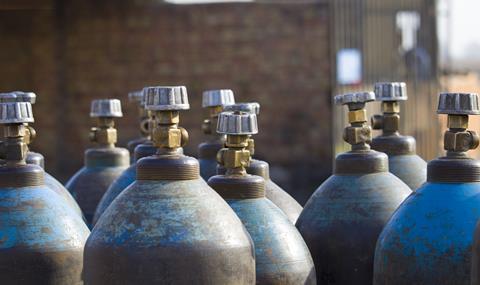
How does the current situation differ to the 2018 CO2 gas crisis?
The majority of food-grade CO2 produced in Europe is sourced as a byproduct of ammonia production, which is then used in products such as fertiliser.
Shortages of the gas in 2018 were caused by the closure of a number of both ammonia and bio-ethanol (another source of CO2) manufacturing plants across Europe for planned maintenance, combined with disruption from technical breakdowns across some sites.
Concerns over gas supplies re-emerged in September 2021, as soaring energy prices across Europe prompted US chemicals giant CF Industries – which produces about 60% of the UK’s supplies – to halt production of the gas at its plants at Ince in Cheshire and Billingham in Teesside.
The situation was further compounded by a fire in Kent that damaged a key power line linking the UK to France, prompting British Poultry Council CEO Richard Griffiths to warn the food sector was facing a CO2 gas supply crisis that could “dwarf” the issues faced in 2018 – given the importance of CF to the UK gas supply chain.
“The kind of volume required by the sector isn’t easily replicable from other gas suppliers,” he added. “Some will look to electrical stunning, but many suppliers don’t have the skills required any more.”
The knock-on effect would ultimately lead processors to have to keep birds on farm for potential culling if throughput fell too far due to animal welfare considerations, Griffiths suggested.
In light of these “unprecedented” concerns, the government stepped in with a temporary cash bailout on 21 September reportedly worth in the tens of millions of pounds. This allowed CF to restart production at Billingham, while a government-brokered pricing deal was then struck on 11 October – guaranteeing a set price for CF and its gas production until 31 January.
What will happen next for supply?
With no certainty over whether CF would continue gas production over the coming weeks and months, the FDF warned in January that supermarkets could face shortages if food suppliers struggled to get hold of enough gas.
Rising energy prices also show no sign of slowing any time soon, and are further complicated by ongoing uncertainty over a potential conflict between Ukraine and Russia.
Ahead of the announcement of a new gas supply deal on 1 February, CF had been keeping its cards close to its chest on its next move and its longer-term plans. Meanwhile, the Department for Business, Energy and Industrial Strategy said “it was for the CO2 industry to ensure supplies” – suggesting it had no plans to step in on this occasion.
BEIS also stresses that other sources of CO2 supplies have since come online, including at a site run by chemical firm Ensus in Wilton, North Yorkshire – alongside additional imports that have helped to improve resilience.
The Grocer understands there were no signs of a winding down in production at CF’s Billingham site in the run-up to the 31 January deadline and the subsequent striking of the new deal on 1 February.
But in the wake of what is another temporary agreement, many food sector bodies have warned a longer-term solution will still be required. The agreement would ensure “continuity of CO2 supply, keeping our shops, pubs and restaurants stocked with our favourite food and drink”, said the FDF’s chief scientific officer Kate Halliwell on 1 February.
However, she also said the body would “continue to work with the UK government to boost our efforts to build resilience into the production of CO2 and protect our food and drink supply chain”, suggesting the food sector’s gas supply chain remained vulnerable.
What alternatives are there to the current CO2 gas supply chains?
The 2019 report for the FDF said there was “ongoing work on the possibility of co-operative approaches, for example consortia who might invest in CO2 production”, while work on developing new sources of supply, such as via anaerobic digestion plants, were also a strong option.
BEIS says AD is very much part of the toolkit in avoiding gas shortages this time round, and it’s a position shared by the poultry sector, according to the BPC’s Griffiths, who points out major processors are already investing significant sums in the technology.
“Our members are looking to diversify risk and to achieve security of supply,” he says. “Yes it might cost a bit more but that’s what they want.”
Processors are also looking seriously to other animal stunning techniques such as low atmospheric pressure stunning, in a bid to reduce their dependence on CO2, Griffiths adds. “They’re going to look elsewhere unless the gas suppliers can offer that security.”
As The Grocer reported in September 2021, other techniques such as needlepoint bi-polar ionisation (NPBI), are now seen as serious alternatives for shelf-life extension. The process converts oxygen molecules into charged atoms that cluster around microparticles and deactivate harmful substances such as mould, bacteria and allergens. It can extend the shelf life of food by up to seven days and while its popularity has surged in the US, its take-up in the UK is limited, said Watkins.
Researchers are also keen to explore the possibilities of using nitrogen to replace certain amounts of Co2 in food packaging.
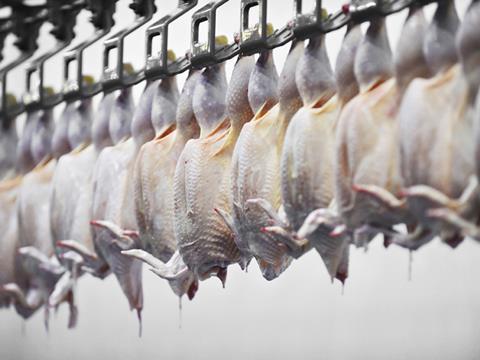
How do gas supplies look at the moment?
As the government-brokered pricing arrangement came to an end in late January, one major poultry supplier told The Grocer that CO2 gas supplies were not yet “a red flag”, with other structural issues such as labour shortages and avian influenza taking precedent. Others have said they have enough stockpiled supplies to deal with shortages over the coming weeks.
Meanwhile, a spokeswoman for Warburtons – which was forced to halt production of its crumpets for several weeks during the 2018 crisis – said that while it was remaining vigilant, “there isn’t any indication of a further issue at the moment”.
CF’s Billingham site alone represents about 30% to 35% of the UK’s capacity, says the BPC’s Griffiths, “so if it closed you’d still have about 65% left over”.
That’s not an ideal situation of course, but unlike in 2018, there should be enough short-term supply on the market, he suggests. However, “some food sectors may have to compete”.
Additionally, Defra has assured pork and poultry suppliers that if a shutdown did occur, the two sectors would be prioritised alongside areas such as the nuclear industry and the NHS, said British Meat Processors Association CEO Nick Allen.
However, that move could prove to be particularly contentious in the event of any future gas shortages, suggests one senior food sector source, and could even prompt a legal challenge by other categories, such as soft drinks and beers, who would argue “prioritising pigs and poultry over other parts of the food sector isn’t fair”.
Questions also remained over how gas supplies could be shipped to the UK in the event of CF stopping production, the source added.
“There is a critical logistics issue with [sourcing from] Norway,” they said. “Because no one ever needed to move CO2 in bulk and at such scale, there’s only one boat that can do that. So production can come from Norway but the physical act of getting it to the UK requires more transport capacity than currently exists.”
Experts had also suggested that the capacity the government was now banking on could be overstated, the source said, particularly given how the Norway gas supply route via chemical firm Yara could face increased demand due to the developing Ukraine/Russia crisis.
What will happen next?
Ahead of BEIS’ announcement on 1 February, a deal simply had to be done, suggested one senior food sector source with knowledge of the current situation. Contracts between CF and its three main suppliers Nippon, Air Liquide and BOC were expected to be rolled over for the next two to three months at least – as long as gas prices remained where they have been.
There was also “fanciful talk of a coalition of customers buying” the CF plant, they added. “But it’s got to be a buyer who thinks this is a commercial proposition.”
If energy prices do rise significantly, that could kill off such a proposition. But if a conflict were to commence between Russia and Ukraine, that might also open up demand for fertiliser via CF, they suggest, given how dominant Russia is in this market and how it could become subject to punitive western sanctions.
Despite the short-term relief of February’s pricing agreement, it looks like the spectre of uncertainty in such a key food and drink supply chain shows no sign of disappearing any time soon.







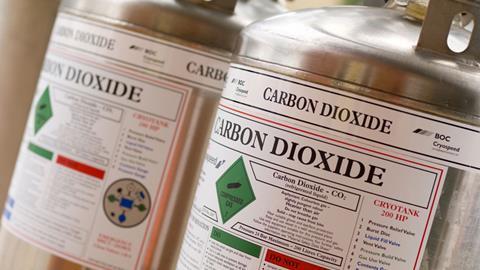
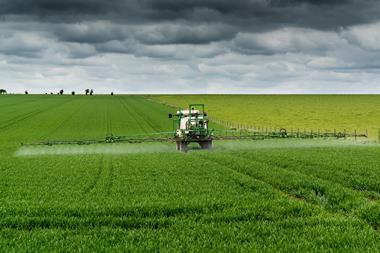

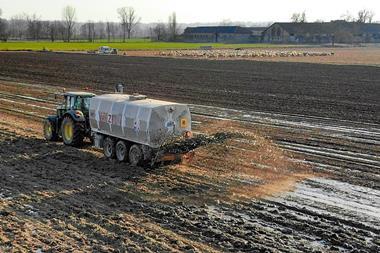
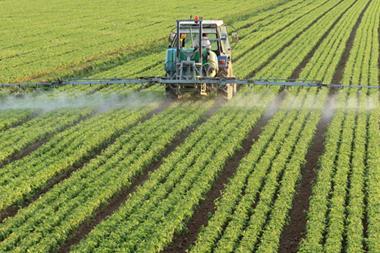

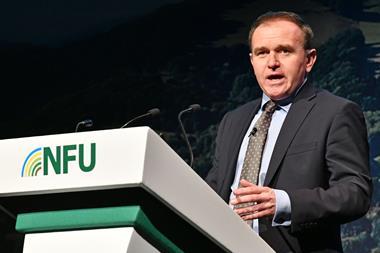






No comments yet